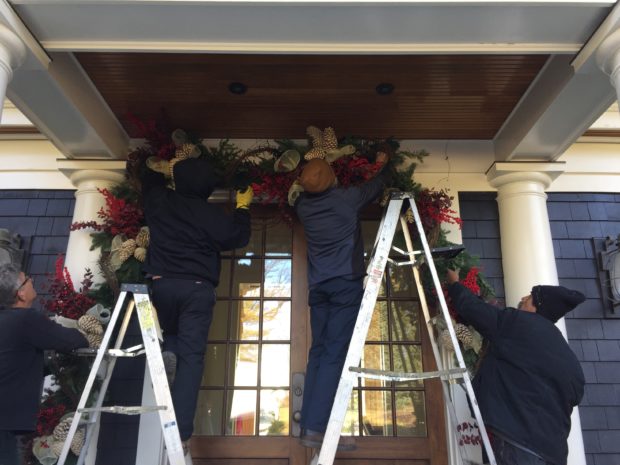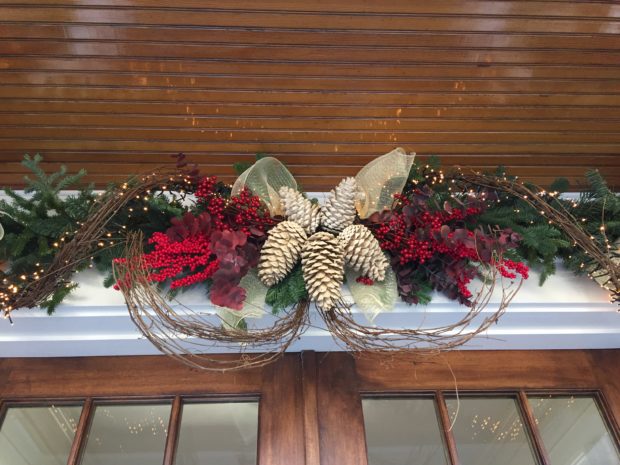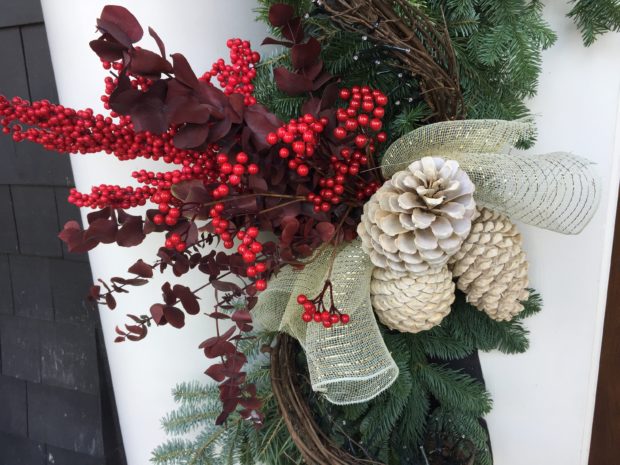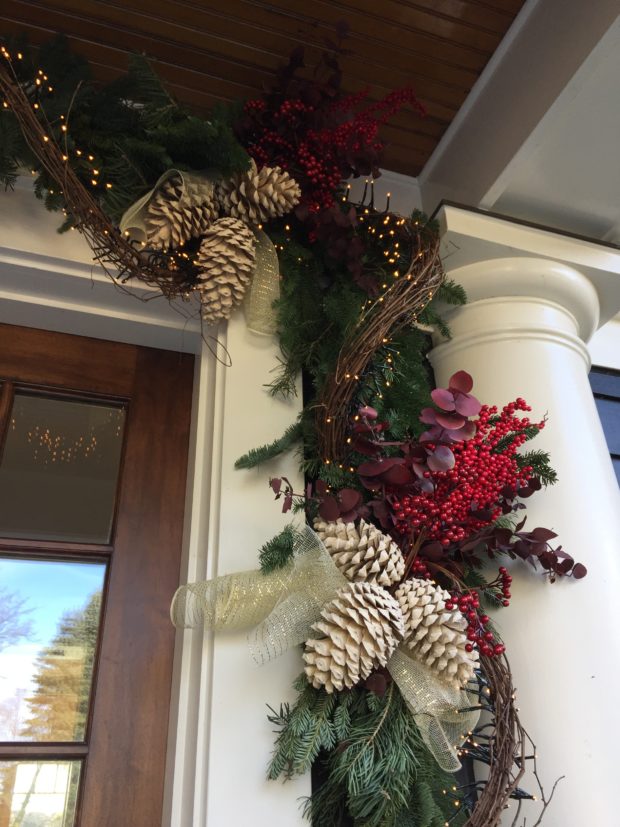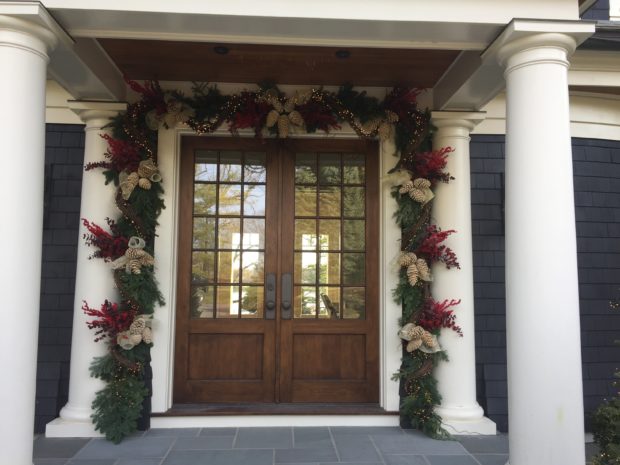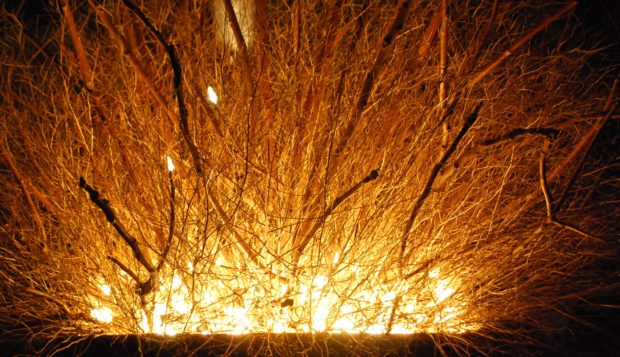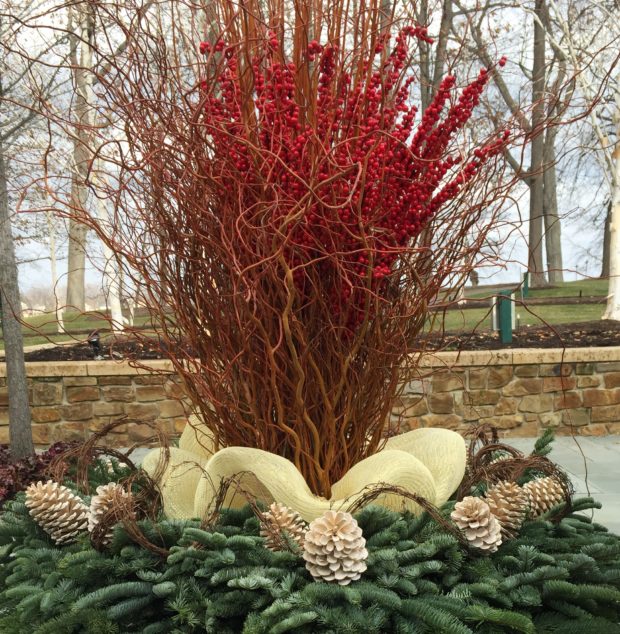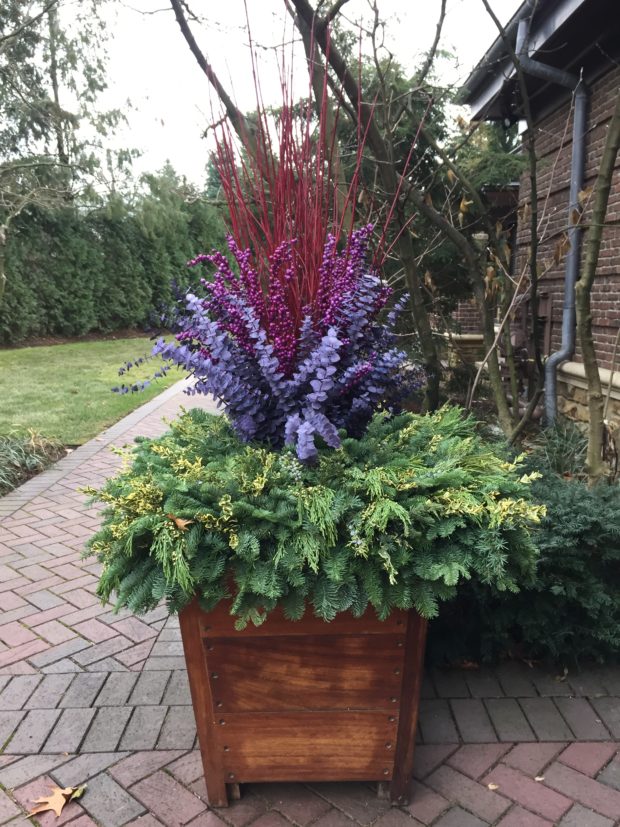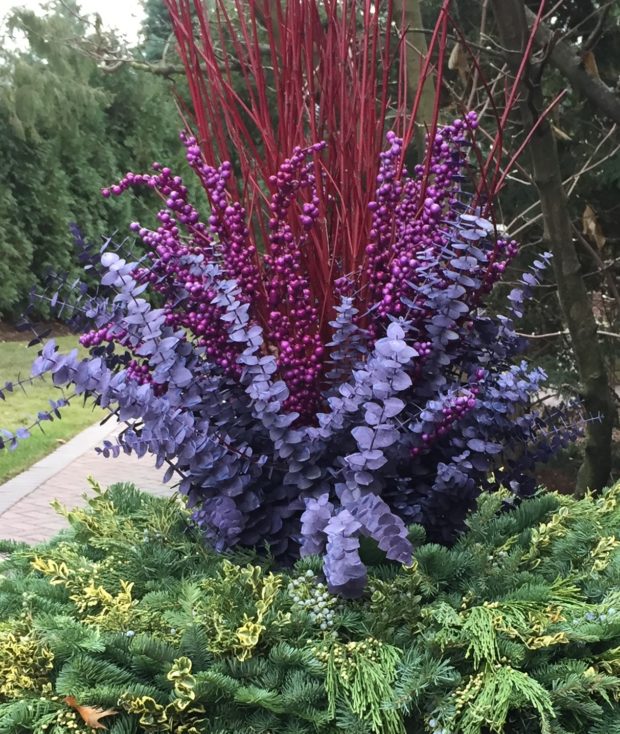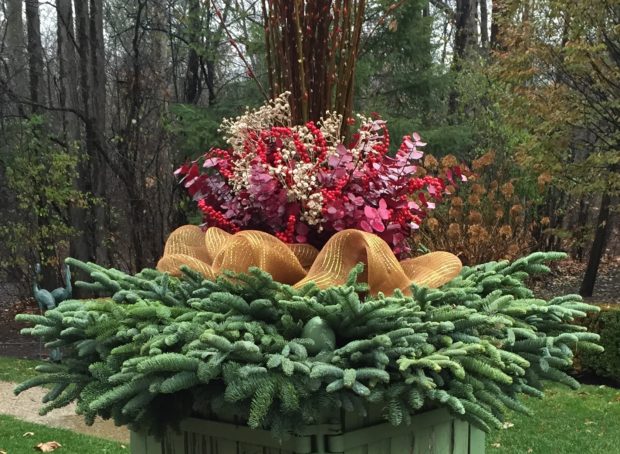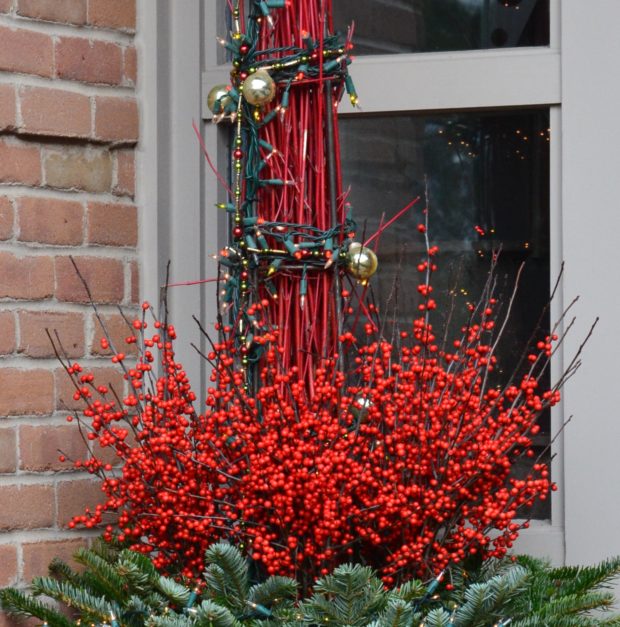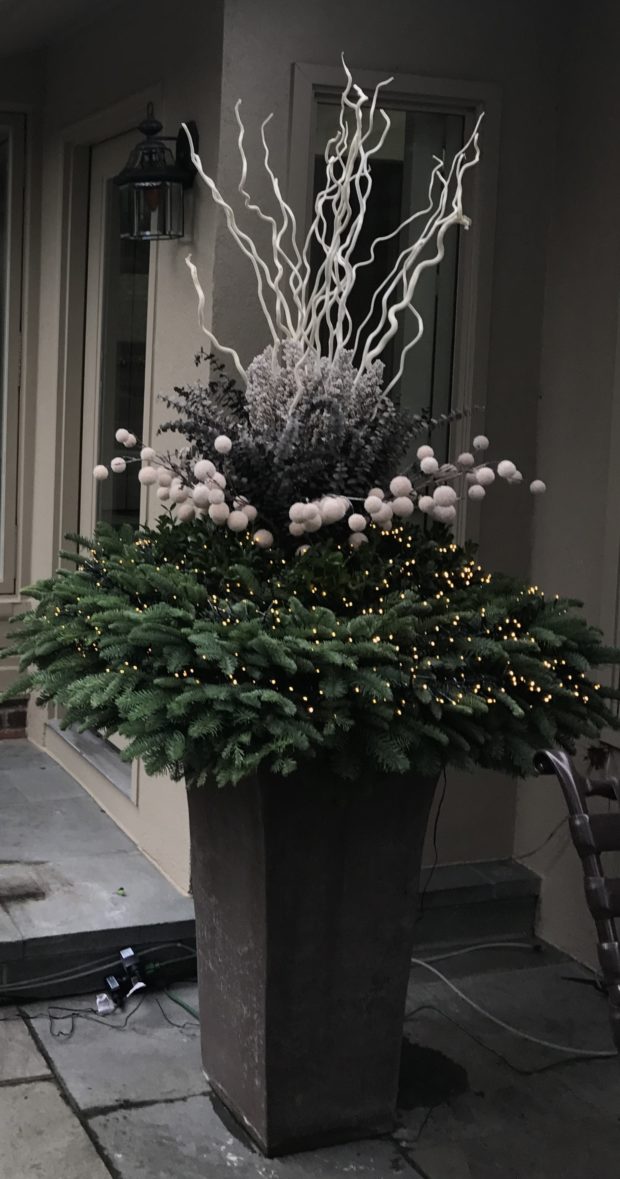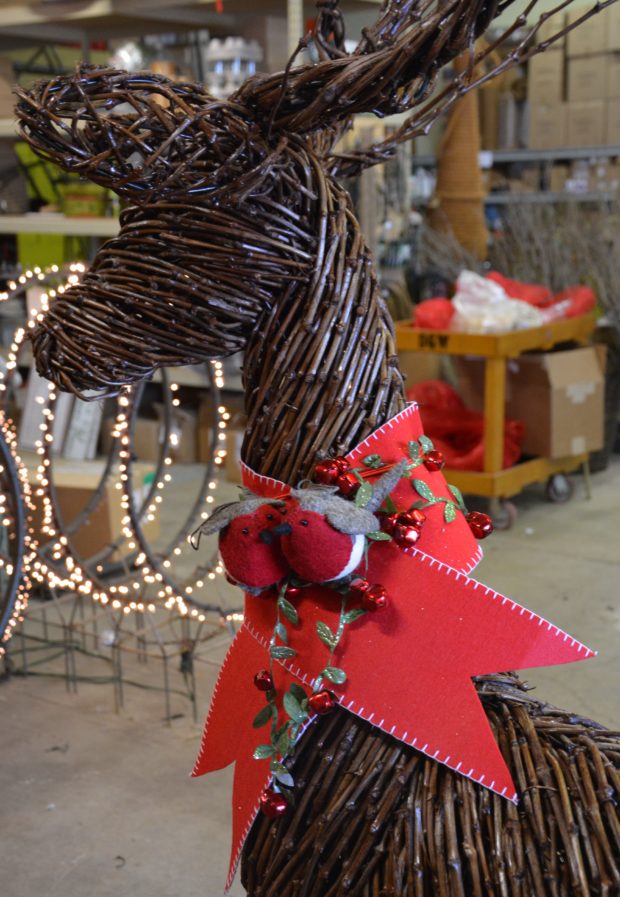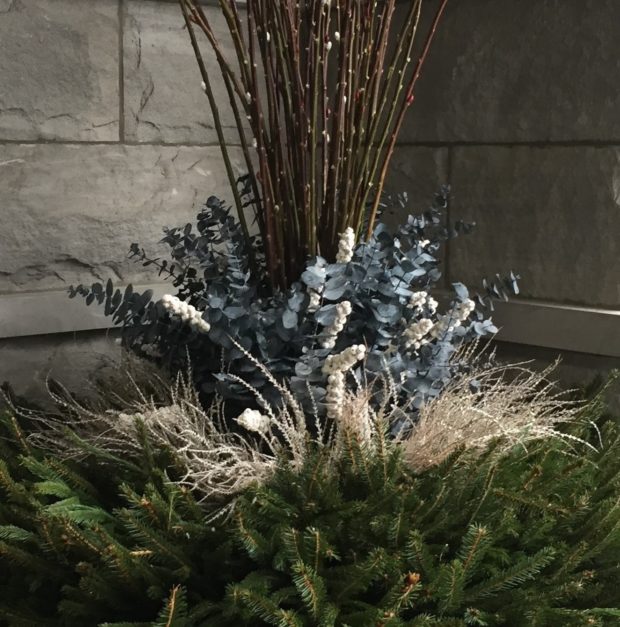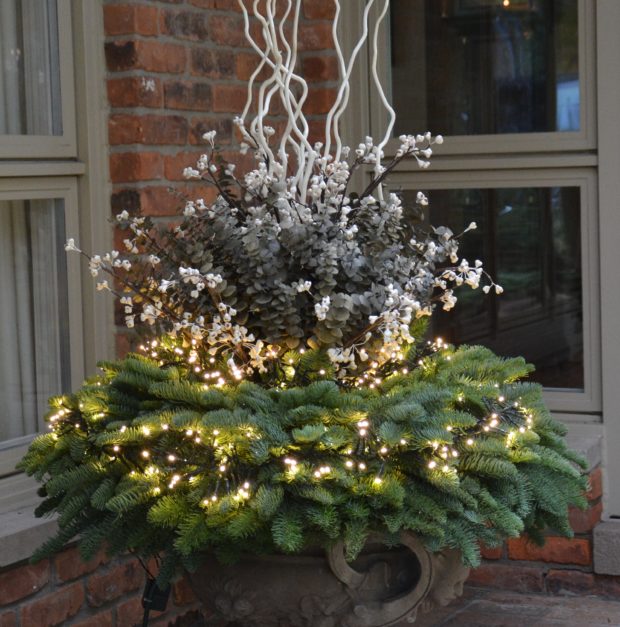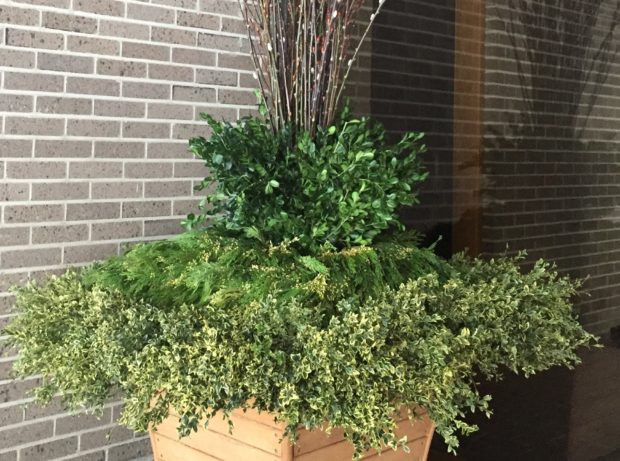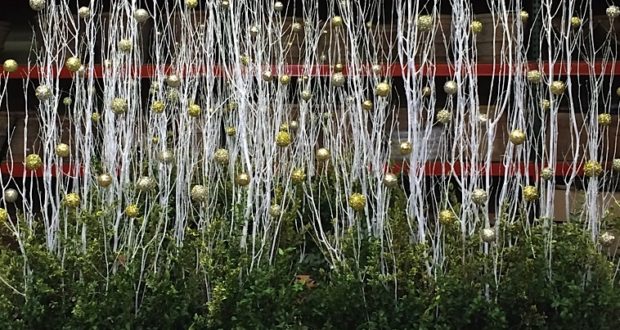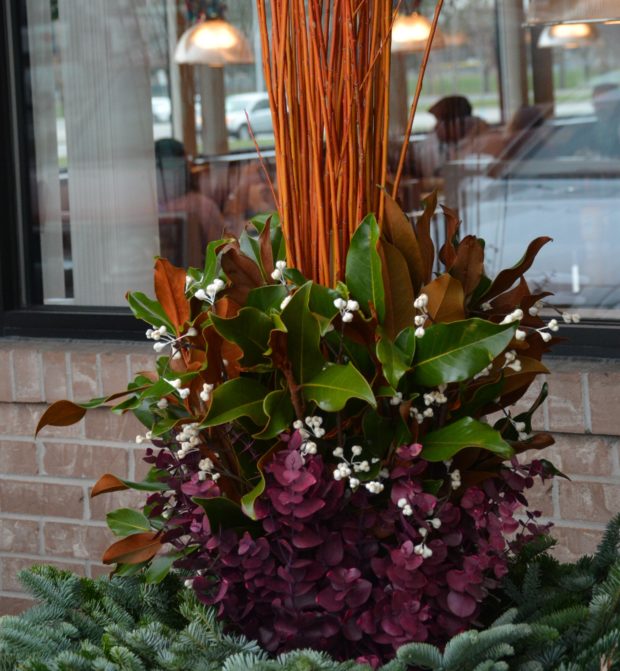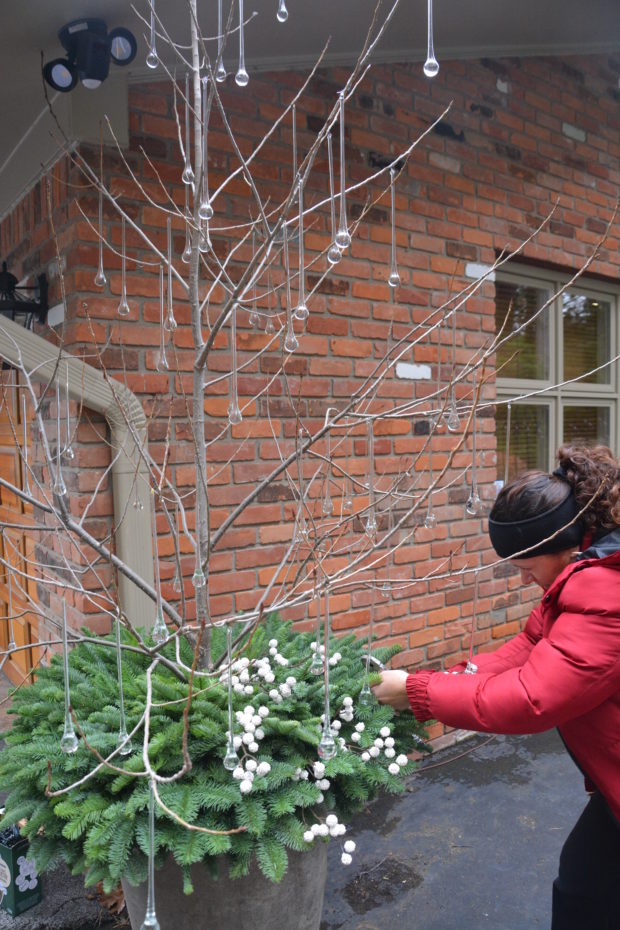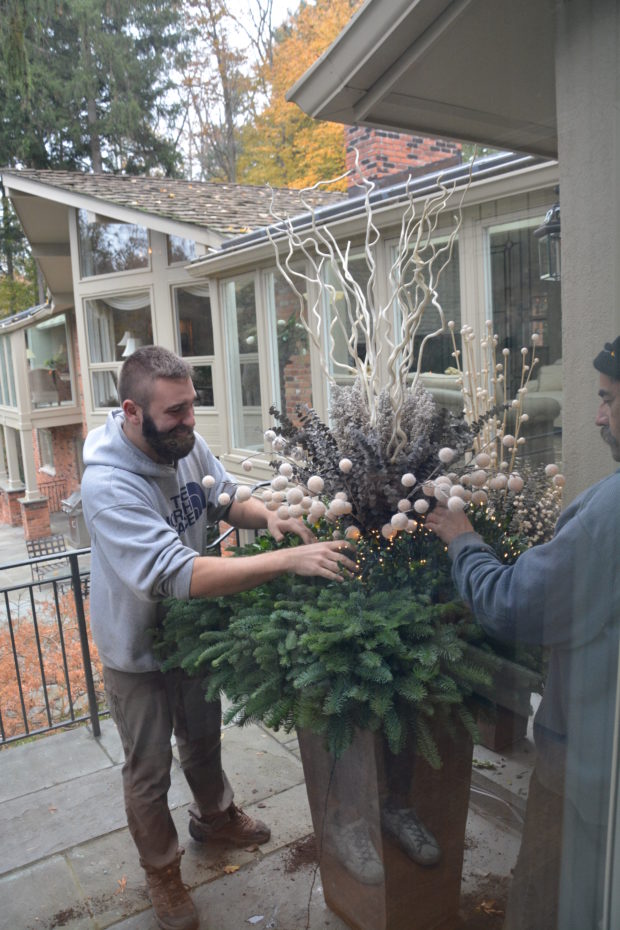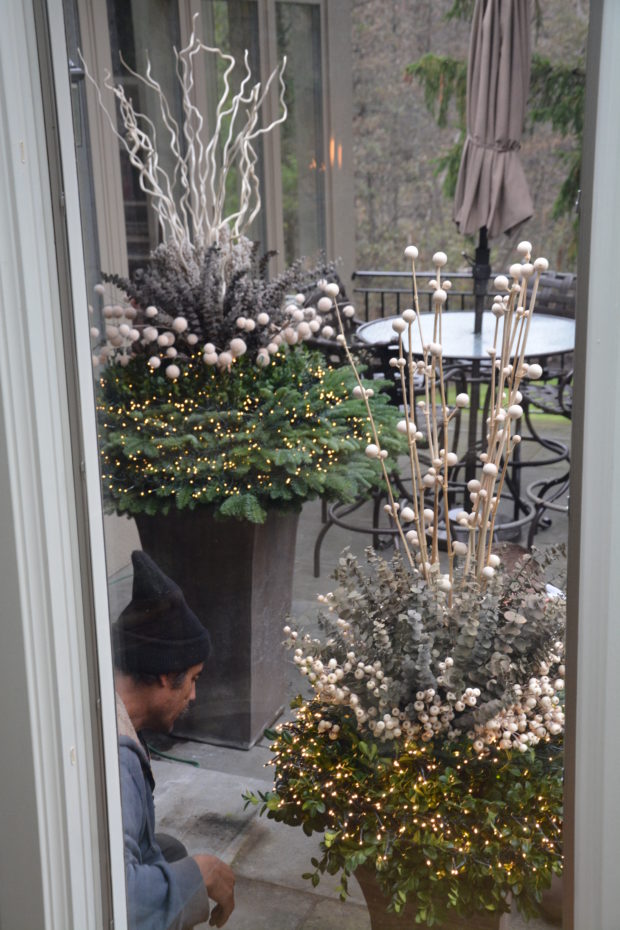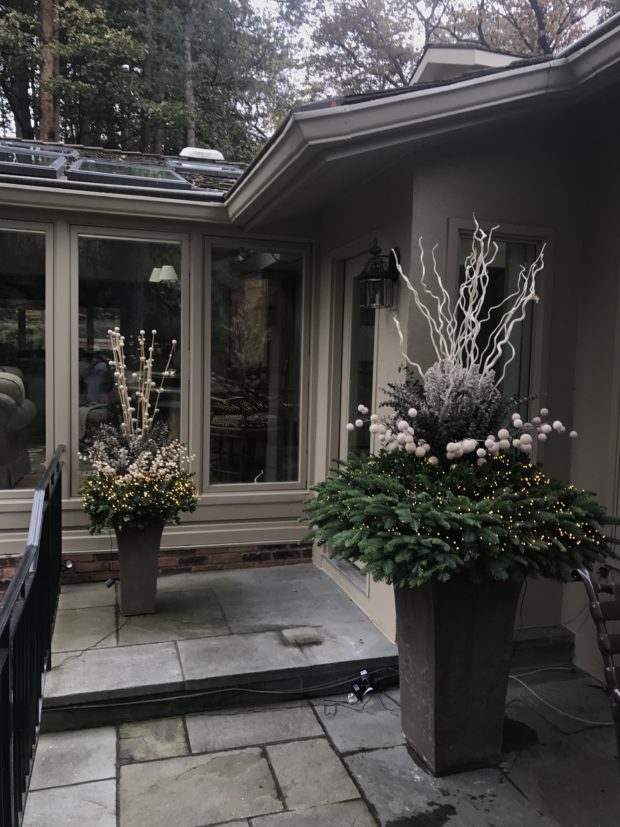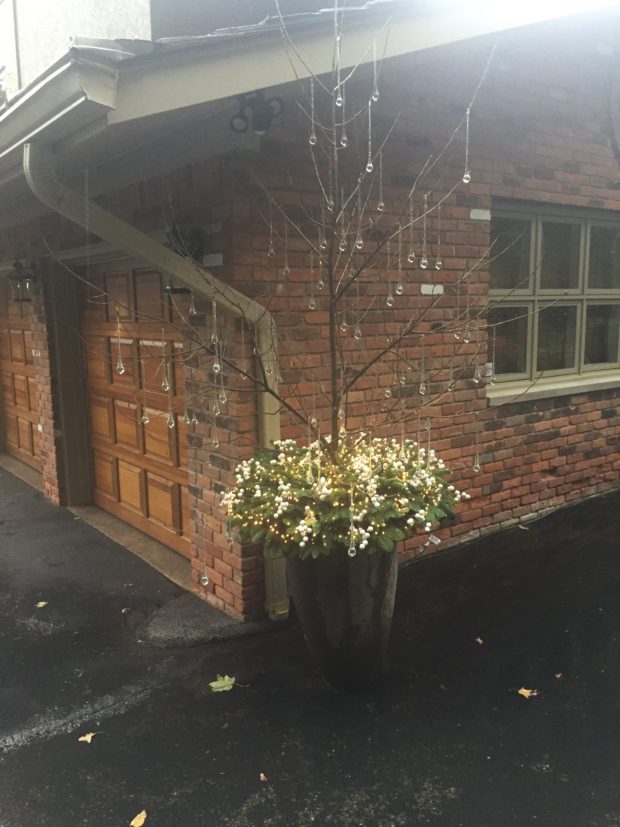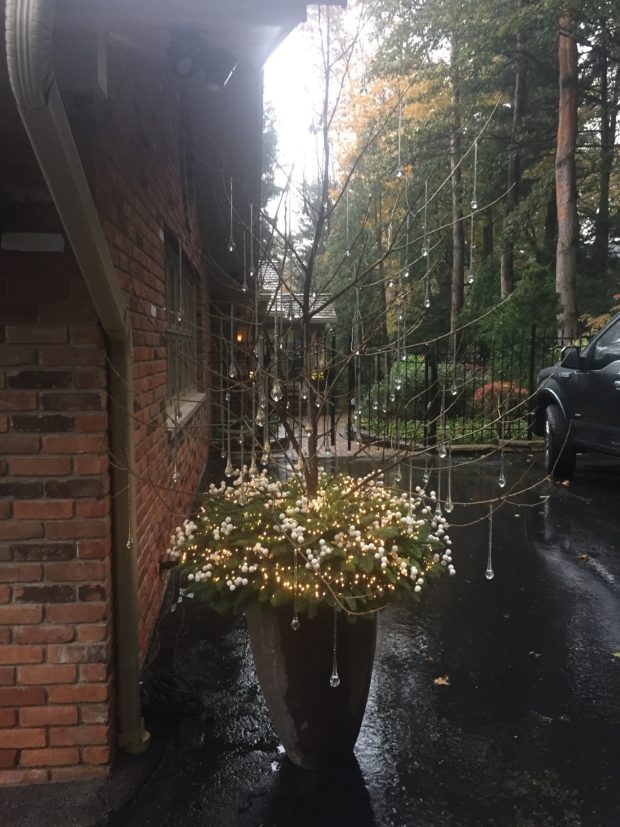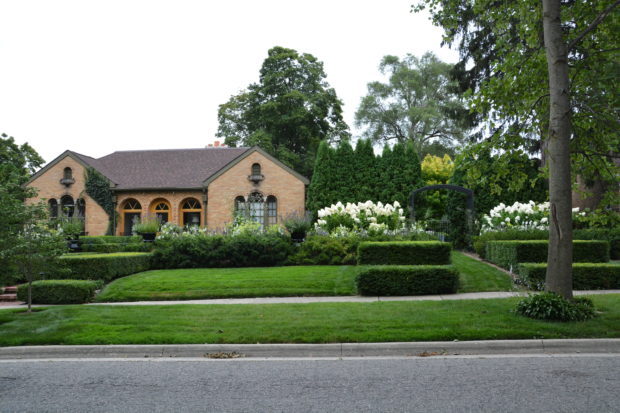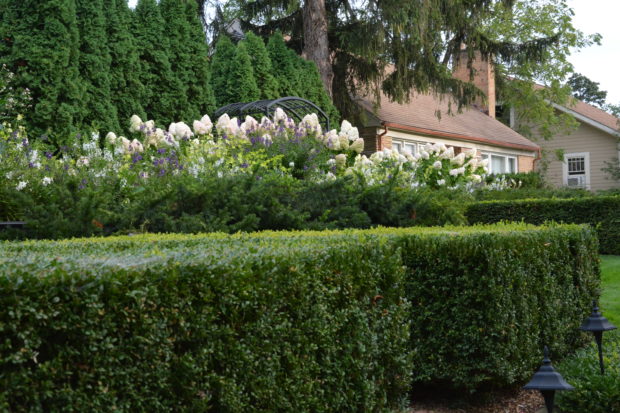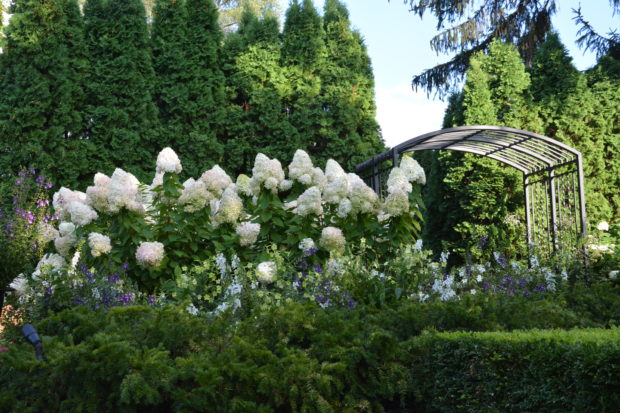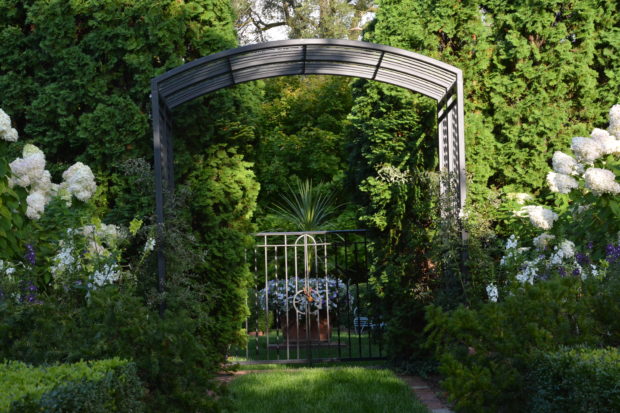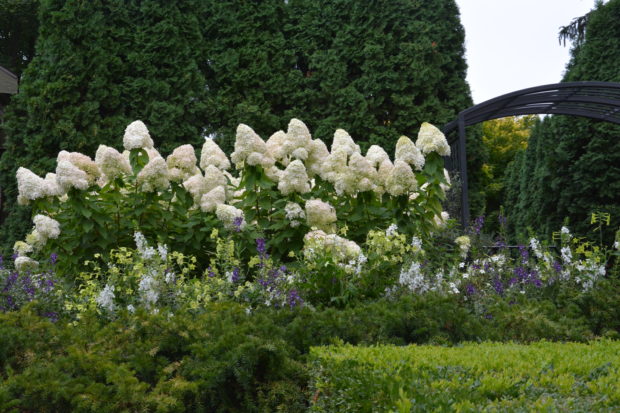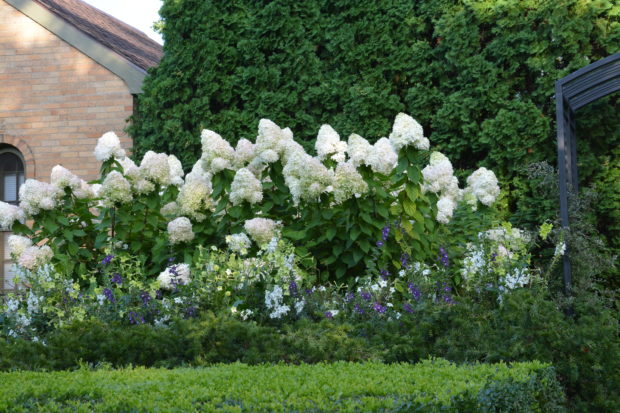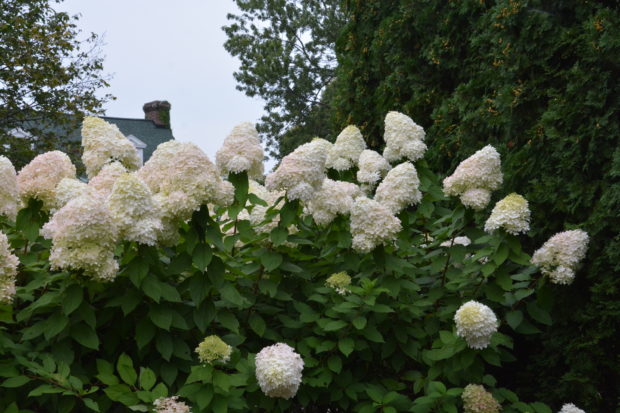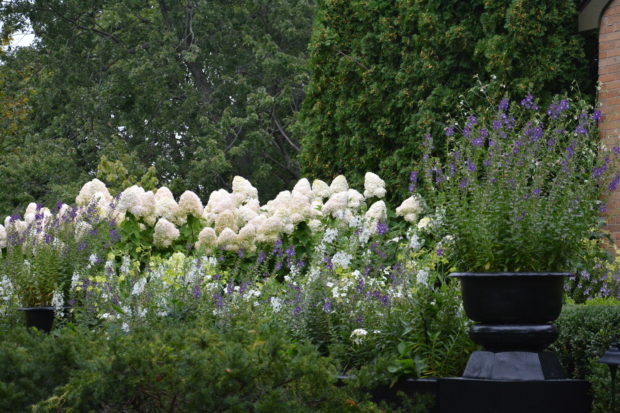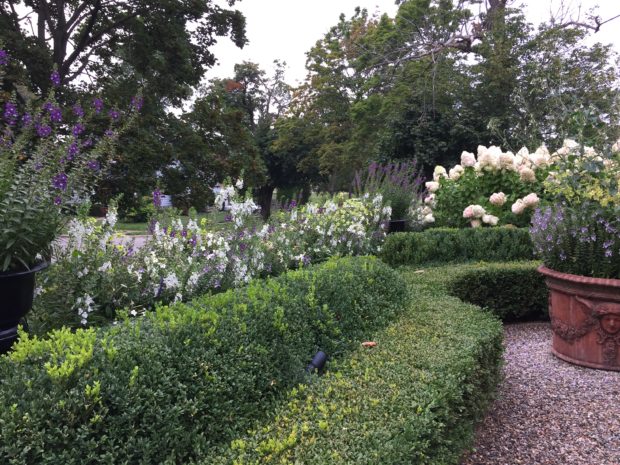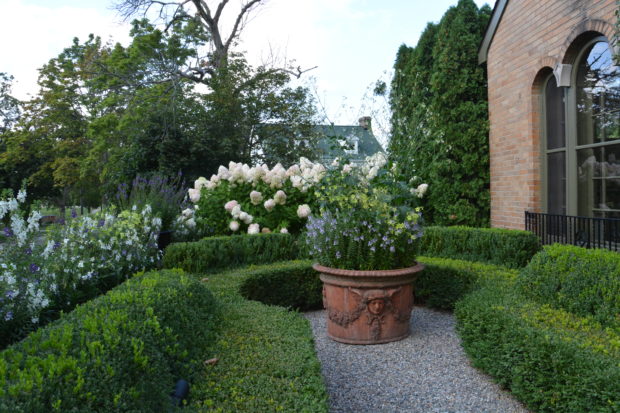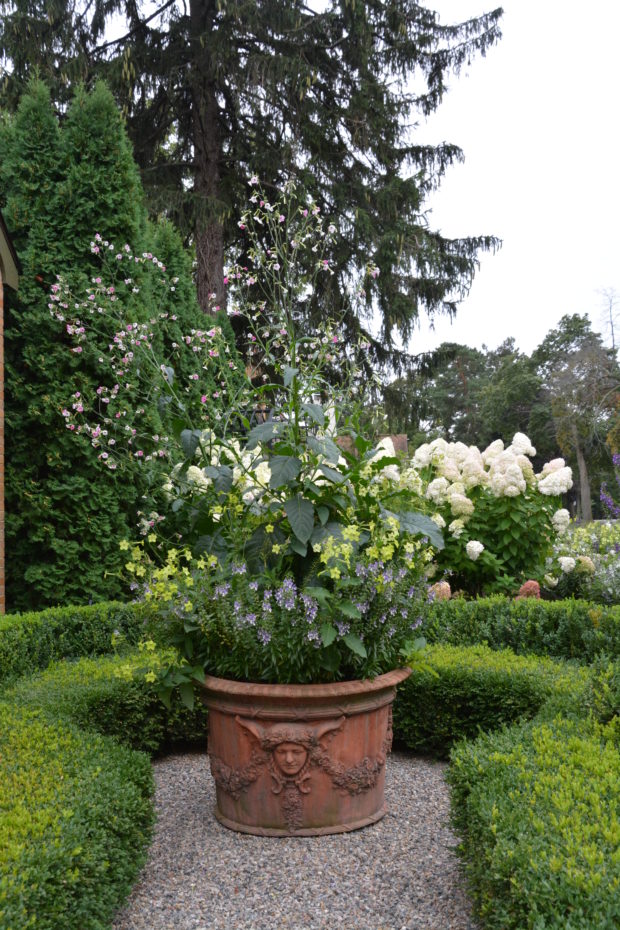 A holiday garland is an especially festive and personal garnish to an outdoor holiday display. There are few parameters and no rules about what constitutes a garland, but for the fact that it has length and continuity such that it can hang from something. A garland does for a winter garden what a vine does for a summer garden. Vines grow up, and garlands hang down, but the big idea is the same. I am sure that vining plants were the inspiration for the first winter garlands, aren’t you? Every garden has a place for something that climbs, or something that drapes. Vines and garlands take up no room on the ground plane, but they can endow the airspace with so much visual interest. A new gardening season asks for a new approach. That every gardener in a northern zone is about to turn to the winter, some talk about garlands might be useful. Most of the garlands we do are placed over the front door, but they are equally at home attached to an arbor, pergola, a gate or a fence. A garland can wreathe a large window, or a favorite garden sculpture. They can be wound around a lamp post, or the trunk of a favorite tree. A garland can also be pooled on the ground around that same light post or tree. Think winter scarf, stole, wrap, or boa. We begin with a simple mixed fir garland custom ordered in advance from our farmers market, to which we add additional greens. A mass of greens has a quiet and substantial look. Any number of other materials can be added to that length of greens. If the garland is to be lighted, I like winding a spiral of grapevine that stands proud of those greens. It provides a perfect place to attach the lights. If we add cluster LED lights, we attach them to the underside of the grapevine. There is no need to be looking at those wires during the day. An underside installation directs the light down onto the surface of the garland. Lights buried in the greens of a garland gives an uneven and not entirely satisfactory night time appearance.
A holiday garland is an especially festive and personal garnish to an outdoor holiday display. There are few parameters and no rules about what constitutes a garland, but for the fact that it has length and continuity such that it can hang from something. A garland does for a winter garden what a vine does for a summer garden. Vines grow up, and garlands hang down, but the big idea is the same. I am sure that vining plants were the inspiration for the first winter garlands, aren’t you? Every garden has a place for something that climbs, or something that drapes. Vines and garlands take up no room on the ground plane, but they can endow the airspace with so much visual interest. A new gardening season asks for a new approach. That every gardener in a northern zone is about to turn to the winter, some talk about garlands might be useful. Most of the garlands we do are placed over the front door, but they are equally at home attached to an arbor, pergola, a gate or a fence. A garland can wreathe a large window, or a favorite garden sculpture. They can be wound around a lamp post, or the trunk of a favorite tree. A garland can also be pooled on the ground around that same light post or tree. Think winter scarf, stole, wrap, or boa. We begin with a simple mixed fir garland custom ordered in advance from our farmers market, to which we add additional greens. A mass of greens has a quiet and substantial look. Any number of other materials can be added to that length of greens. If the garland is to be lighted, I like winding a spiral of grapevine that stands proud of those greens. It provides a perfect place to attach the lights. If we add cluster LED lights, we attach them to the underside of the grapevine. There is no need to be looking at those wires during the day. An underside installation directs the light down onto the surface of the garland. Lights buried in the greens of a garland gives an uneven and not entirely satisfactory night time appearance.
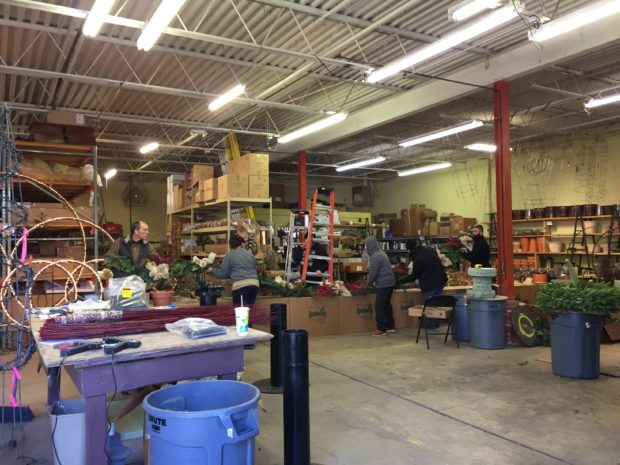 Once we have lighted and adorned a holiday garland, it takes most of us to pick it up, and load it in the truck for delivery. Evergreen garlands are heavy. The needles weigh next to nothing-but the woody branches to which those needles are attached weigh a lot. If you are able to make your own garlands from scratch, wire together short evergreen tips that have a lot of needles, and not so much wood. Anything that gets added to a garland adds more weight. Really heavy garlands drape beautifully-thanks to that phenomena known as gravity. That weight also requires a thoughtful and secure installation.
Once we have lighted and adorned a holiday garland, it takes most of us to pick it up, and load it in the truck for delivery. Evergreen garlands are heavy. The needles weigh next to nothing-but the woody branches to which those needles are attached weigh a lot. If you are able to make your own garlands from scratch, wire together short evergreen tips that have a lot of needles, and not so much wood. Anything that gets added to a garland adds more weight. Really heavy garlands drape beautifully-thanks to that phenomena known as gravity. That weight also requires a thoughtful and secure installation.
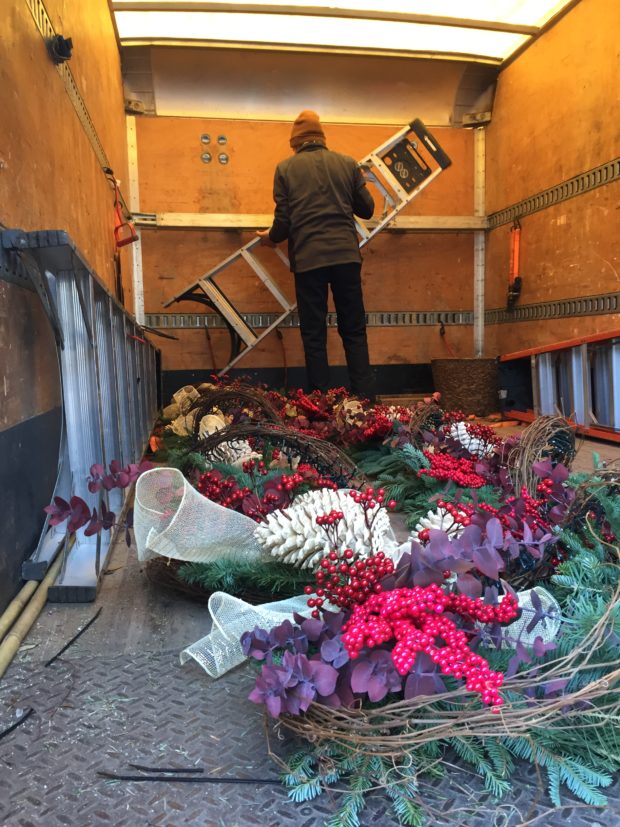 We are fortunate to have a truck that can hold and spread out a 25 foot garland on the floor. All the work that goes into attaching all of the garnish to that long length of evergreens does not need to be flattened. What we arrange in the stock room that is three dimensional needs to get to the job with all of that dimensional quality intact.
We are fortunate to have a truck that can hold and spread out a 25 foot garland on the floor. All the work that goes into attaching all of the garnish to that long length of evergreens does not need to be flattened. What we arrange in the stock room that is three dimensional needs to get to the job with all of that dimensional quality intact.
 This garland took a number of people to unload and hang. Your garland project may not need four people. You may be able to construct a garland all on your own, and hang it on your own, start to finish. Any gesture in the garden and landscape, no matter the season, that features the work of a pair of hands greatly interests me. The clear evidence of the human hand is what makes the work visually compelling.
This garland took a number of people to unload and hang. Your garland project may not need four people. You may be able to construct a garland all on your own, and hang it on your own, start to finish. Any gesture in the garden and landscape, no matter the season, that features the work of a pair of hands greatly interests me. The clear evidence of the human hand is what makes the work visually compelling.
 To follow are a number of pictures about the installation of this particular lighted garland. We have been constructing garland for this client for the past 10 years. I am happy to say that this year’s garland is exuberant.
To follow are a number of pictures about the installation of this particular lighted garland. We have been constructing garland for this client for the past 10 years. I am happy to say that this year’s garland is exuberant.
